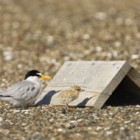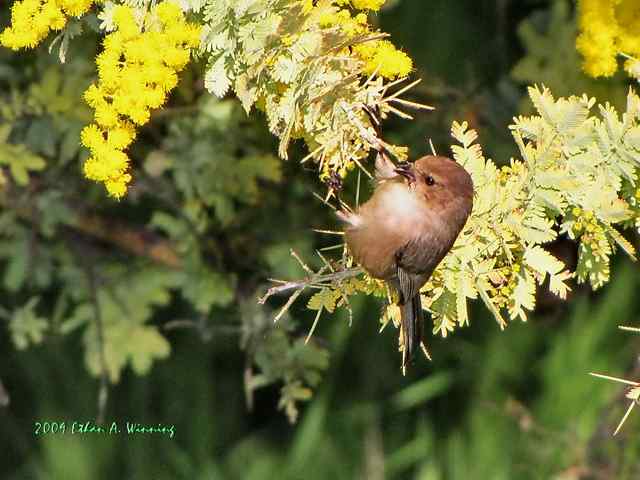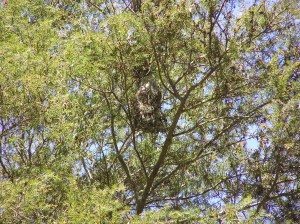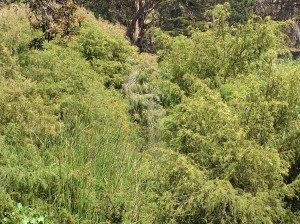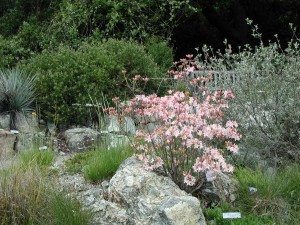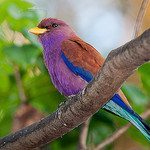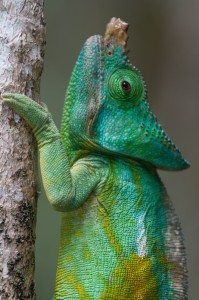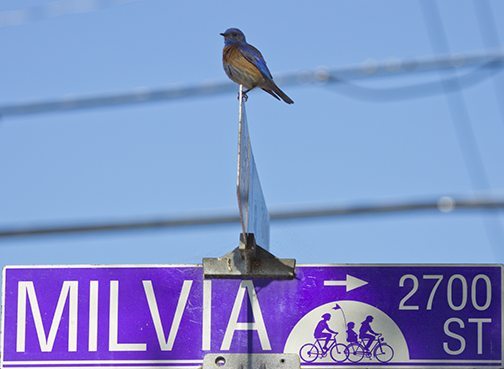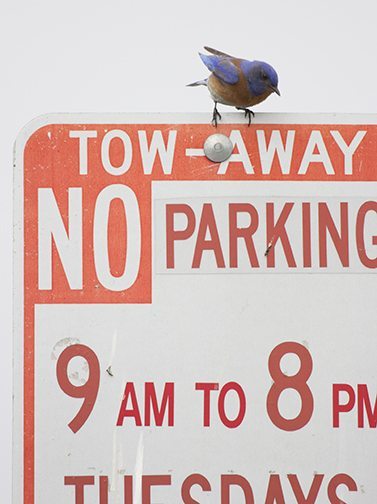Return of the Terns
By Ilana DeBare
The cement stretched for acres around us, cracked and neglected, weeds springing up every few feet through the cracks. It reminded me of a scene from some post-apocalyptic science fiction movie, or from Alan Weisman’s fascinating book The World Without Us, in which he extrapolates what would happen to the planet if humans were to suddenly vanish.
 NOT your stereotypical wildlife refuge / Photo by Ilana DeBare
NOT your stereotypical wildlife refuge / Photo by Ilana DeBare
But it wasn’t anything quite so dramatic. We were crossing an abandoned runway at the former Alameda Naval Air Station.
And we were riding in, of all things, an old-fashioned yellow school bus – on the annual Return of the Terns tour.
Each June, the East Bay Regional Park District joins with other groups including Golden Gate Bird Alliance to host bus tours of the breeding colony of endangered California Least Terns at the old Alameda naval air station.
The area is normally closed to the public to prevent disruption of the tern nests. But on Saturday, we were able to drive within yards of the tern colony, provided we didn’t get off the bus or make loud noises.
This may be one of the most unusual birding sites in the world. Forget images of birding in leafy groves or reedy marshes. Least Terns traditionally nest on flat strips of sand or gravel — wide-open surfaces that seem frighteningly vulnerable but give them a good view of potential predators.
Decades ago, the terns apparently decided that the airstrip’s tarmac would be a good substitute for their vanishing beaches. They started returning and nesting here each spring despite the constant takeoffs and landings.
These were California Least Terns — the West Coast subspecies of the smallest kind of tern, which were placed on federal and state endangered species lists in 1970. So the fact that they were trying to breed here was a big deal. Over the past 30 years, volunteers with Friends of the Alameda Wildlife Refuge — a committee of Golden Gate Bird Alliance — have worked with East Bay Regional Parks, the Navy and the U.S. Fish and Wildlife Service to nurture and protect the colony. (GGBA is still pushing to get the nesting area declared an official wildlife refuge.)
 Tern on nest (behind wire fence) near marker for monitoring nests. The terns return to the Bay Area each April to breed, then fly south in July or August.…
Tern on nest (behind wire fence) near marker for monitoring nests. The terns return to the Bay Area each April to breed, then fly south in July or August.… 
